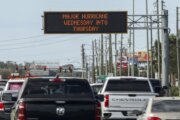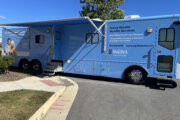Would you be able to tell the difference between a bruise caused by an innocent bump into furniture, or abuse in an older adult? What if it were a 3-year-old child? How quickly would you report the life-threatening problem?
Elder abuse is a complex and troubling trend. Previous research suggests the prevalence of elder abuse ranges between 5 and 30 percent. However, research published in the Journal of the American Medical Association suggests that 1 in every 10 older adults falls prey to some kind of abuse that’s either physical, psychological, sexual, financial or neglectful in nature.
What’s more, a 2010 U.S. Government Accountability Office report estimated that 14.1 percent of non-institutionalized older adults experienced physical, psychological or sexual abuse, neglect or financial exploitation.
Despite these numbers, experts at this year’s White House Conference on Aging said that only 1 in 23 cases of abuse is actually reported, according to a May 2015 Elder Justice Policy Brief.
“Not enough attention has been drawn to the issue,” says Edwin Walker, Deputy Assistant Secretary for Aging of the Administration on Aging within the Administration of Community Living. “We know it’s been a silent issue, and people don’t talk about it.”
What Are the Warning Signs?
Unfortunately, abusers aren’t always easy to identify, says Dr. Lisa Gibbs, medical director of SeniorHealth Center, chief of geriatric medicine and director of the Center of Excellence on Elder Abuse and Neglect at the University of California, Irvine.
“Bruising in older adults can be complicated just because many assume older adults bruise easily,” Gibbs says. “Unfortunately many bruises go unnoticed. It’s really the location of the bruises you should pay attention to.”
Elder abuse goes above and beyond bruising, though, she says. The National Center on Elder Abuse recognizes the following as warning signs of physical and emotional abuse, neglect or financial exploitation:
— Bruises, pressure marks, broken bones, abrasions and burns;
— Unexplained withdrawal from normal activities, sudden changes in alertness or unusual depression;
— Bruises around the breasts or genital area;
— Sudden changes in financial situations;
— Bedsores, unattended medical needs, poor hygiene and unusual weight loss;
— Harmful spouse or caregiver behavior, such as verbal bullying, threats and other abuse of control;
— Frequent arguments between the caregiver and aging individual.
Interestingly, she says, when one type of abuse is recognized, other types of abuse are often sidekicks. For instance, neglect can be recognized in the home of a caregiver who doesn’t have the skill or knowledge to properly care for the older person. In some of the worst cases, financial exploitation happens, too, she says.
“We’ve had several cases where they’ll just say, ‘Sign here. This is just a form to help you take care of things,'” Gibbs explains. “And it turns out to be a significant legal document where they’ve given up the right to their home.”
If someone has difficulty seeing or hearing, it becomes an even bigger issue to discern what’s being placed in front of them in terms of financial or legal documents. As people age, they begin to depend on others for care and are therefore more vulnerable to abuse, Gibbs says.
Why Does It Happen?
“We believe that about 80 percent of abusers are family members,” Gibbs says. “It’s a disturbing number. The rest are non-family members.”
It’s a combination of those who are truly out to take advantage of other people and those who are incapable of taking care of their loved one. Sometimes, people do have good intentions, she adds. “But they’re just not able to because perhaps they have their own chronic problems.”
Financial strain is one of the family stressors that can contribute to elder abuse. Although somebody might receive better care in an assisted living facility or nursing home, the family may not be able to afford that luxury.
“The stressors of just caregiving is a very big phenomena in our society, and it’s not well recognized,” Gibbs says.
How Can You Help?
If you detect elder abuse in the community or a home setting, call your state’s adult protective services. If the older adult is being abused at a long-term care facility, contact the Long-Term Care Ombudsman Program, offered through the U.S. Department of Health and Human Services’ Administration on Aging.
Adult protective services provides interventions in response to reports of adult abuse. The agency typically investigates the report, and monitors and evaluates the home where the reported abuse occurred. The caseworkers may help arrange changes to medical, social, legal or housing services to those involved.
“Some people are afraid when they report the abuse to authorities that the older person will be taken from his or her home or something drastic will happen,” Gibbs says. “But the social workers are well-trained in response to reports and respectful of their clients. The first intention is to make sure they’re safe. In some cases, they might end up leaving their home, and it’s really only after every alternative is uncovered.”
Dr. Laura Mosqueda, director of the National Center on Elder Abuse, part of the Administration on Aging, located at the University of Southern California’s Keck School of Medicine, says that many people know about child protective services, but very few people know about adult protective services.
“What people sometimes don’t realize is by the time abuse comes to a person’s attention, the abuse has not been going on for days or weeks — it’s been going on for years, and people are getting neglected to death,” says Mosqueda, who is also a practicing physician and a professor of family medicine and geriatrics at Keck School of Medicine.
That’s why it’s important to remain alert, Walker explains.
“We know that too many older individuals who are victims of elder abuse are suffering in silence,” he says. “If you see a change in their behavior or physical condition, you should begin to question what’s going on.”
If you’re an overwhelmed caregiver, communicate with other family members to alleviate any possibility that you, yourself, could cause harm, Gibbs says.
More from U.S. News
5 Ways to Cope With Mild Cognitive Impairment
Easy Ways to Protect Your Aging Brain
How to Detect Elder Abuse originally appeared on usnews.com







